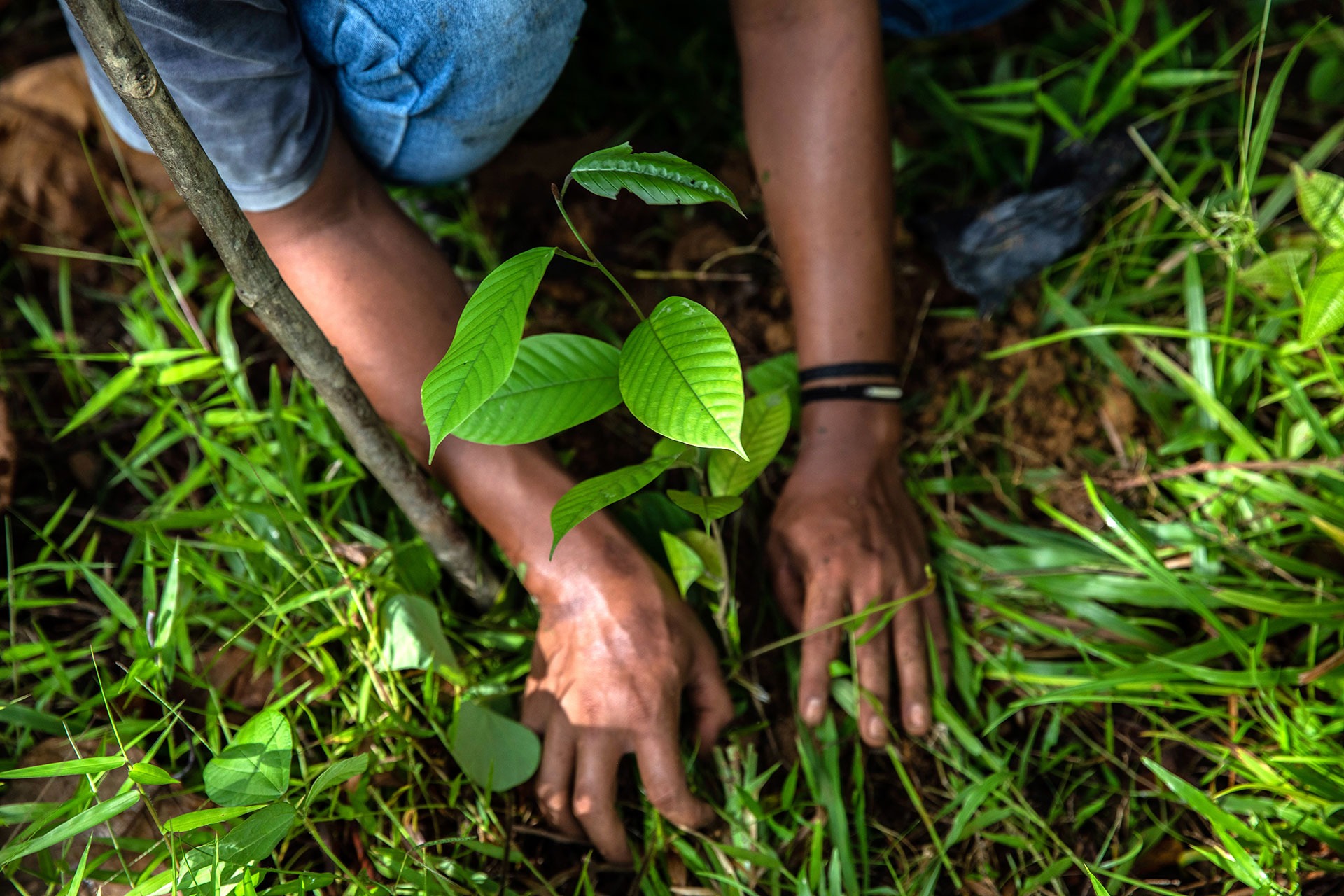Climate change mitigation & adaptation need high-impact natural solutions that support sustainable development. Time to “let nature do the job it spent billions of years perfecting”.
Last August, as many parts of the world suffered floods, fires and heatwaves, the UN IPCC presented ‘incontrovertible’ evidence of the link between climate extremes and human activity.
This week’s IPCC report is no less stark in assessing our human vulnerability to climate change. Up to 3.6 billion people already live in global hotspots. Here, climate risk compounds ‘overlapping challenges’, from poor access to clean water and healthcare, to livelihoods with little change resilience.
We can’t keep taking these hits” explained Inger Andersen of the UN Environment Programme. “Soon, the wounds will be too deep.” Our mitigation and adaptation efforts – so far weak and uneven – must shift the balance of interactions between ecosystems and human systems, and provide a basis for climate-resilient development. How do we start restoring the links between human, environmental and planetary health? “The best way to do it is to let nature do the job it spent billions of years perfecting.”
Nature is key to a 1.5C world
A liveable future depends on the ecosystem services that a biodiverse Earth provides.
In presenting the report, co-author Prof Hans-Otto Poertner singled out forest-based projects and agroforestry as powerful environmental responses, both for mitigating climate change and adapting to its impacts. And, as he explained, they are prime examples of ‘measures that not only improve climate resilience, but go hand in hand with lifting people out of poverty’ and contribute to multiple sustainable development goals.
For example, mangrove forests provide more than $80 billion a year in avoided losses from coastal flooding, and directly protect 18 million people in coastal areas. They also contribute $40–50 billion annually through fisheries, forestry, and recreation benefits.
This may not be new science, but it is far from established economic reality.
Scaling up natural solutions
We know that protecting and restoring tropical forests is a complex challenge. But innovative forest business models can play a part, and are already being applied across the tropical belt.
At one level, this is simple economics: we can protect tropical forests by making them more valuable as living ecosystems than as felled timber.
In 2019, The Food and Land Use Coalition’s Prosperous Forests report showed how hundreds of regenerative businesses are already creating socio-economic incentives to halt deforestation and start restoring lost or damaged forest. These collaborations – with local cooperatives and other ‘forest stewards’ – rely crucially on the kind of indigenous and traditional knowledge highlighted by the IPCC “not only to frame questions in more relevant ways but to develop answers that are more inclusive”.
Regenerative forest-based businesses, taken together, are part of a nature-positive economy with huge investment potential. Yet they remain on the wrong side of a deeply damaging imbalance in the world’s financial flows. It’s estimated that transitioning to more nature-positive systems of food and land use requires at least $300bn a year in new investment – a huge sum… but still less than that invested in deforestation-related companies by UK pension schemes alone (as revealed in this study with Make My Money Matter, earlier this month).
Together with Climate Focus, the Food and Land Use Coalition will this year publish a major analysis that explores how to close this investment gap, including the role of different financing strategies and the voluntary carbon market in different countries and regions around the world.
“We can be agents for change”
The IPCC has left us in no doubt that the need for global action is even more urgent than we thought. And, as Dan Lashof, the WRI’s US director, wrote: “We no longer have the option to choose whether to cut emissions, adapt to climate impacts or figure out how to manage damaging consequences.”
Some natural countermeasures will no longer work above certain danger-points of global warming. So, effective but under-funded solutions, with high adaptation and mitigation potential, and which support most of the SDGs, need to be given the fullest chance to work now.
The report is dire warning against inaction. Yet many of climate adaptations, sustainable development priorities and economic opportunities point in the same direction. Perhaps co-author Dr Debra Roberts put it most simply: “A lot of the challenges we are facing can be addressed by creating equitable and sustainable world.”
To find out more about the IPCC’s findings on tropical forests, see its Cross-Chapter Paper 7. Section 7.2 looks at how sustainable tropical forest management can contribute to the SDGs.
SYSTEMIQ is a climate and systems change company, with a mission to accelerate the transition to a net-zero, nature-positive and more inclusive economy. We do this by building ambitious multi-stakeholder coalitions; advising leading companies, financial and public institutions; and investing in businesses that will scale new solutions in energy, natural solutions and materials.
To speak to someone about natural solutions, you can contact us here.
Image: mature seedlings are planted in Sumatra, Indonesia. Kemal Juffri for Panos Pictures/Food and Land Use Coalition

